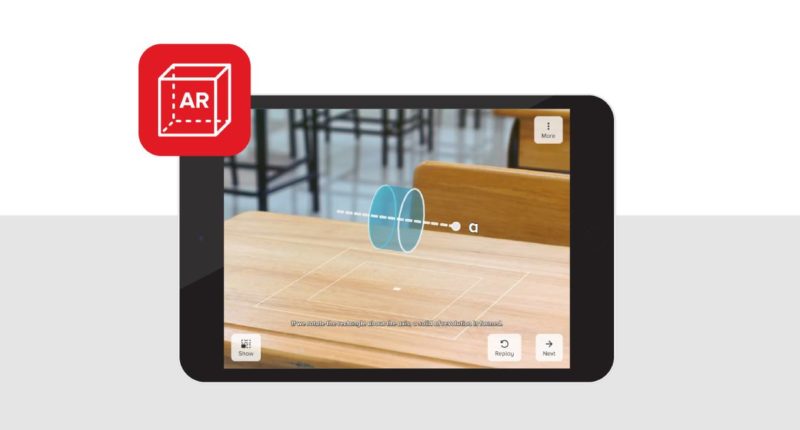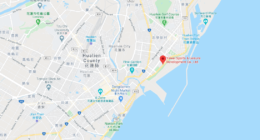McGraw Hill and Verizon recently announced an Augmented Reality (AR) application to facilitate 6-12 grade students learning pre-algebra and geometry. The app features 3D models, animations, everyday objects, and interesting learning activities that promote the hands-on experience. For example, students can have a deeper understanding of cross-sections by slicing 3D models (e.g., pyramid, battery, etc.), or they could be tasked with calculating a slope to help a skateboarder jump. Currently, the learning material is still limited, and it is expected that more content will be available this Fall.
The app is free to download on Google Play and App Store, yet the lesson plans accompanying the learning materials are only available through Verizon Innovative Learning HQ.
The staff at McGraw Hill and Verizon believe this app will bring a better learning experience and more equal access to next-generation learning opportunities. By leveraging AR technology, the app is trying to increase engagement, retention, interactivity, and hopefully learning outcomes. “Following the disruptions to classroom learning over the past few years, our AR app will pioneer new ways of engaging students with important concepts and materials. While AR technology may still be an area of uncertain utility today, we see the possibility of boundless impact tomorrow and are excited to take this step in support of the students and teachers we serve,” said Shawn Smith, chief innovation officer of McGraw Hill’s School group. At the same time, this free easy-to-use AR application makes it more accessible to students and educators. “Seeing how educators are rethinking how they teach, how students learn, and how to reinvent using emerging technologies, now more than ever it is imperative that they have access to next-gen learning tools and the powerful learning opportunities they unlock,” said Alex Servello, director of corporate social responsibility at Verizon.
AR applications have great potential in the classroom. Compared to virtual reality, AR is easy-to-use and can be simply deployed on devices like cellphones or tablets. In addition, more teachers are becoming aware of the potential of AR in boosting student engagement. According to a report conducted by Hanover Research, 74% of educators who use AR use it at least once a week.
What McGraw Hill and Verizon are doing is not easy because developing high-quality interactive 3D content is time-consuming and requires intensive effort, but the endeavor will finally be paid off. High-quality content is more likely to increase learning engagement and learning outcomes, which will bring more users and start a positive feedback loop.










Comments are closed.